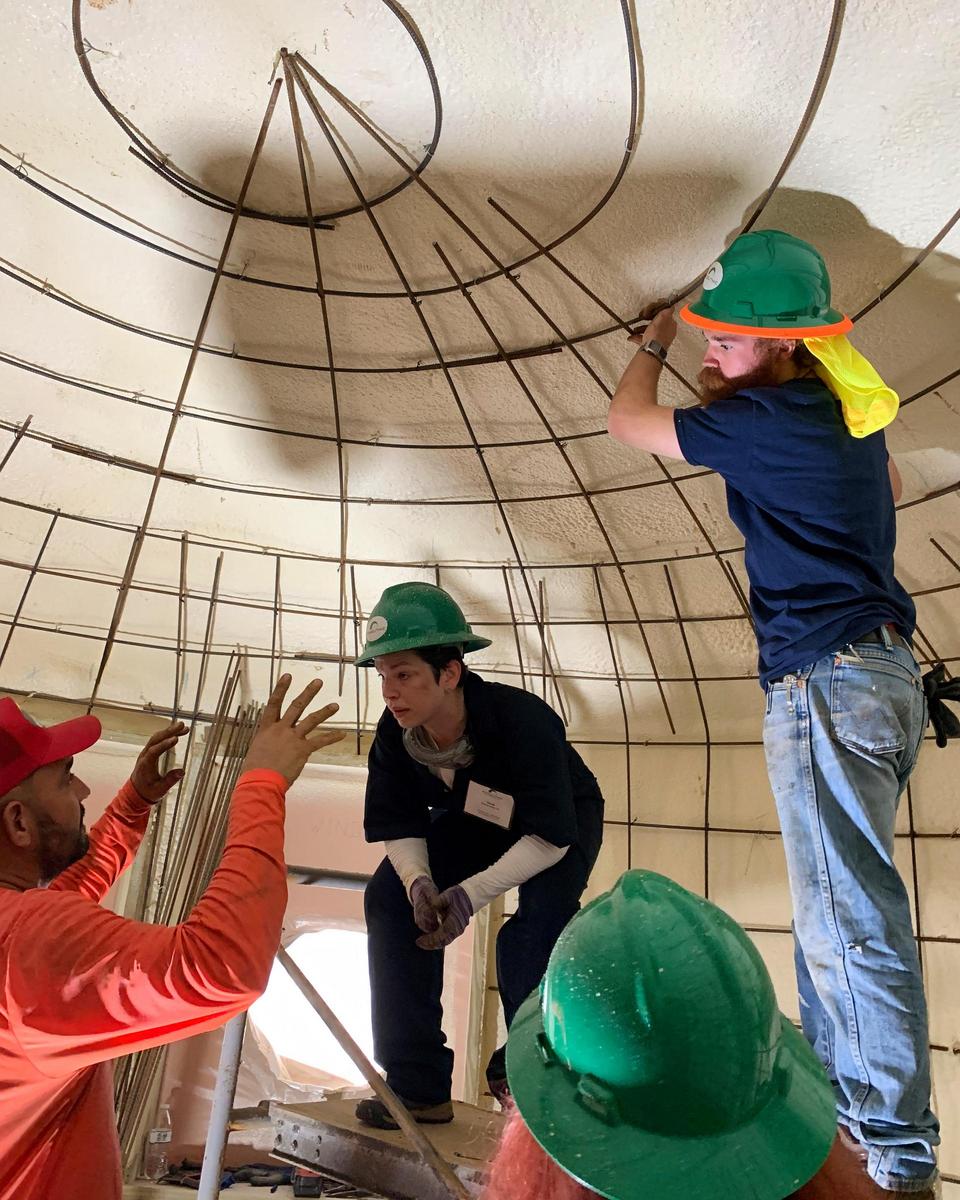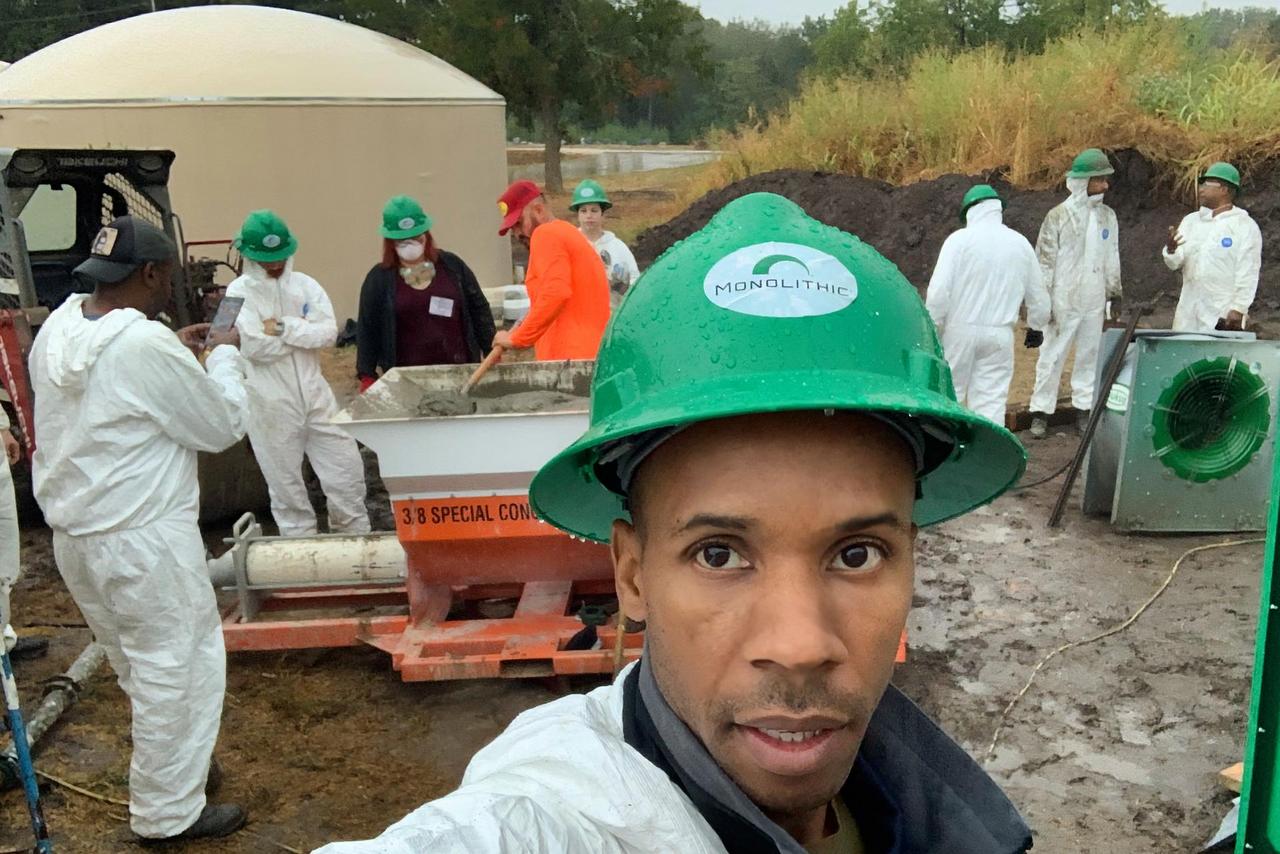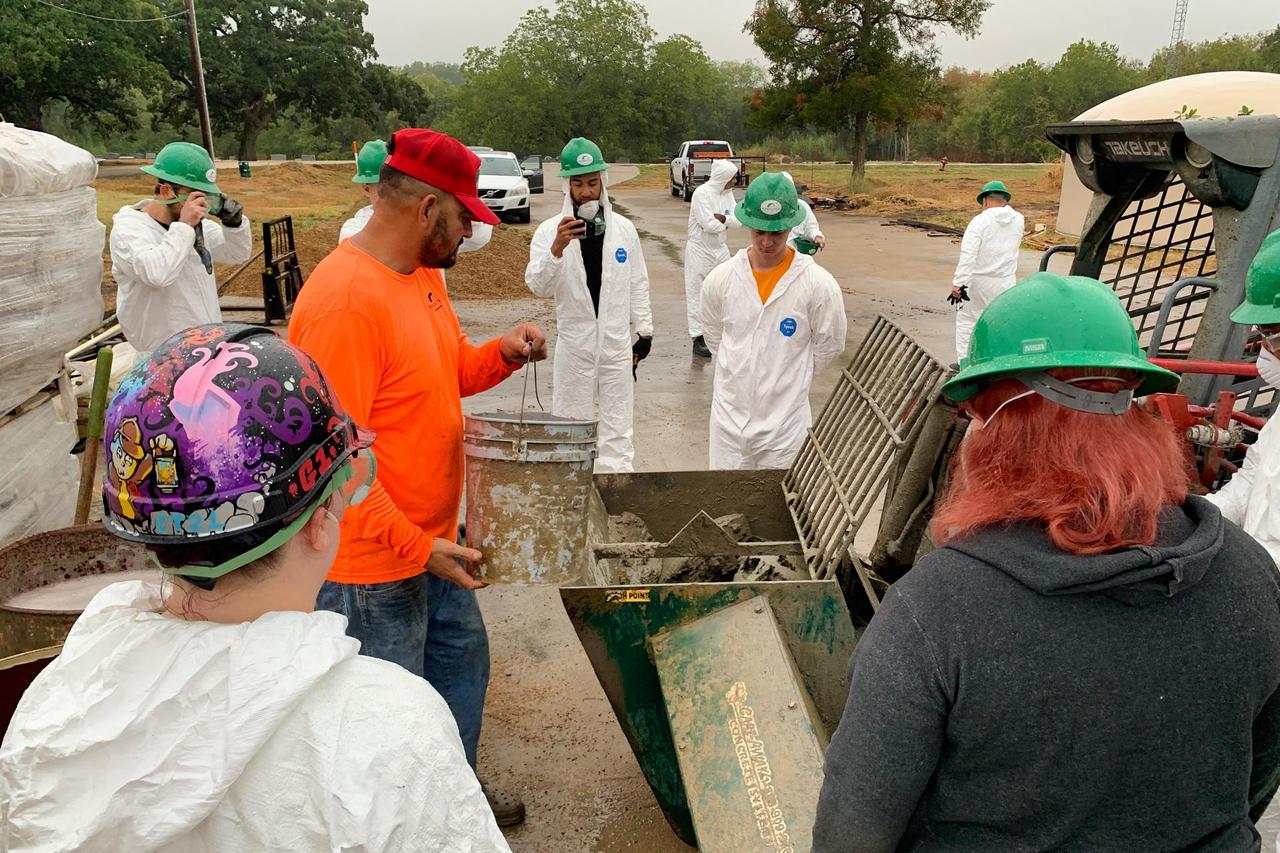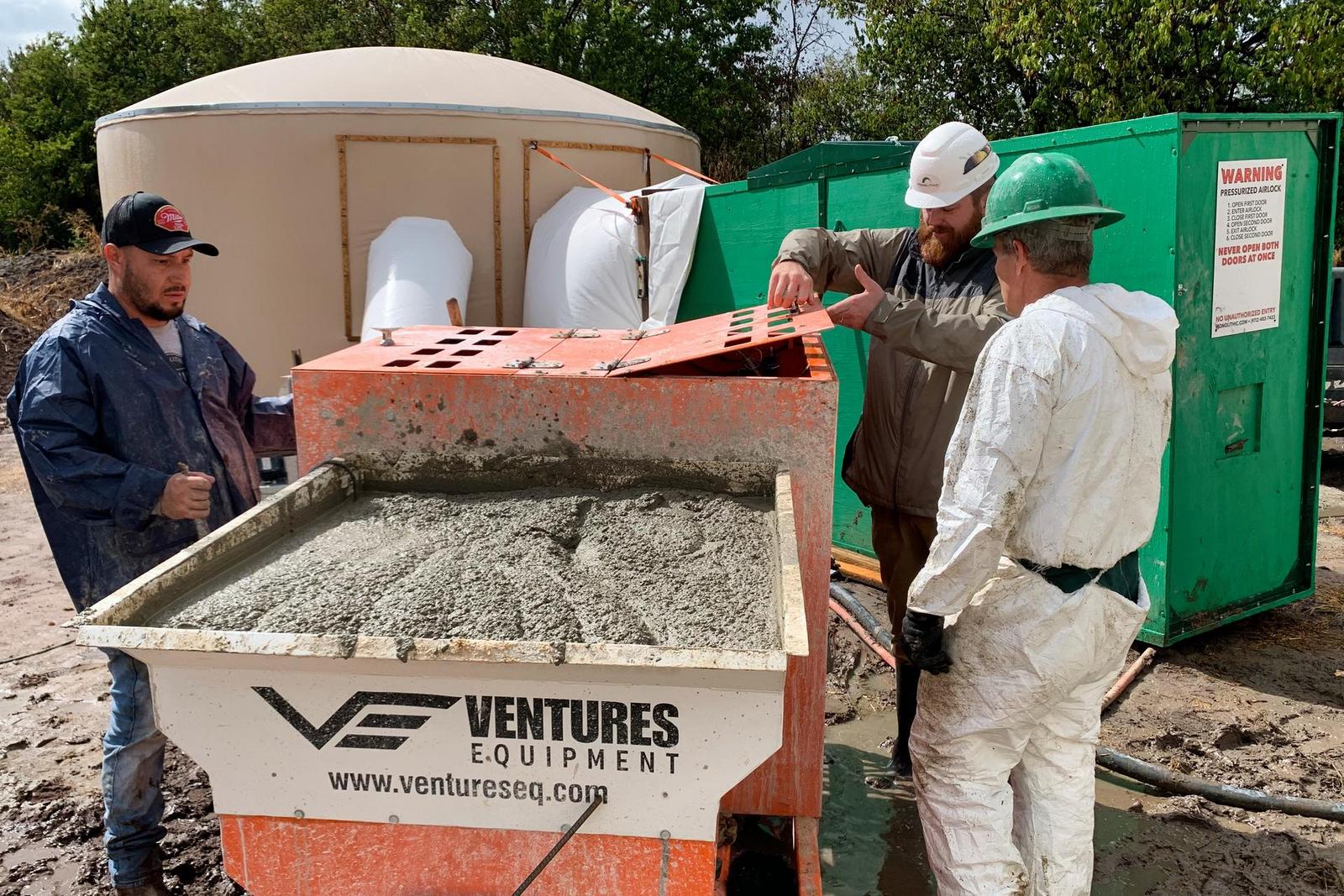Fall 2023 Dome Builders Workshop Strengthens Skill Sets
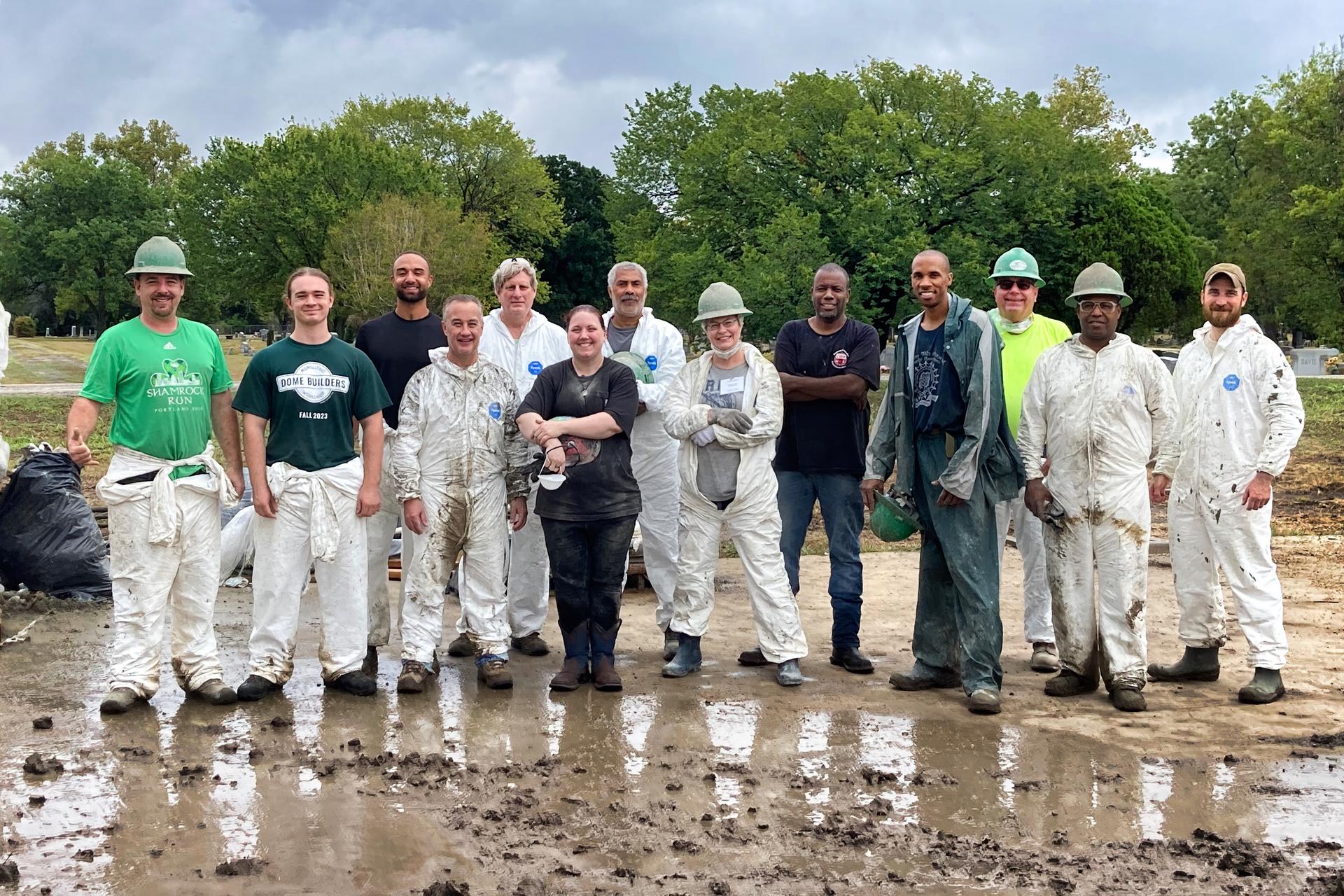
The attendees of the Fall 2023 Dome Builders Workshop take a break after learning to spray shotcrete. It was a rainy and muddy week, but the weather did little to dampen the spirits of the group.
The adventurous entrepreneurs at the Fall 2023 Monolithic Dome Builders Workshop learned skills to create their own homes, and some of them also discovered a shared passion for bringing these sturdy, sustainable structures to their communities as affordable housing.
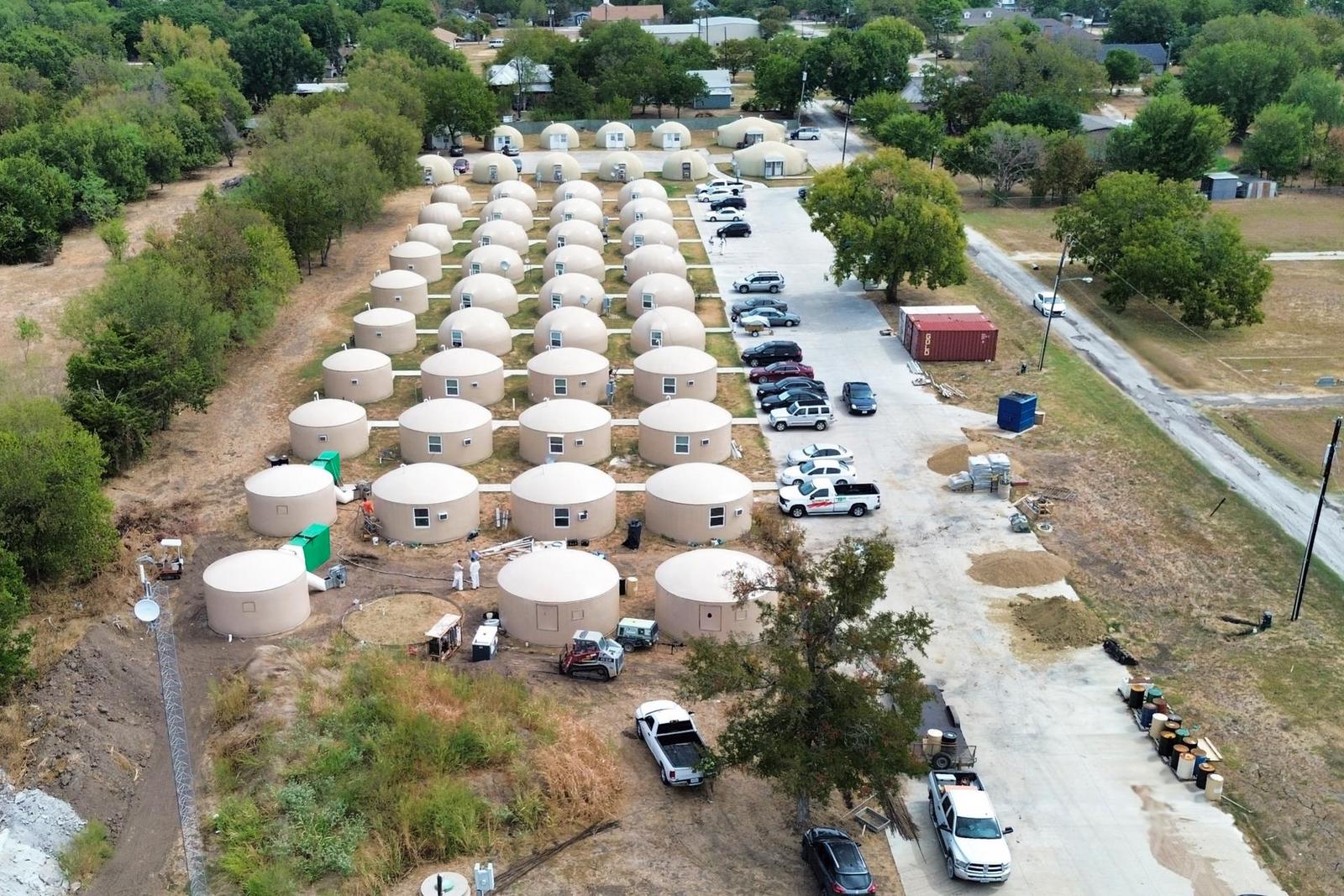
A bird’s eye view of the Monolithic Dome apartment complex in Dawson, Texas, where the workshops are held. Attendees helped construct two domes, identified by the two green airlocks at the bottom left.
Joshua Richardson
Joshua Richardson arrived from Coweta, Oklahoma, filled with a fascination for dome homes. His grandfather, Terry Riley, built a foam house in the early 1980s, and so Joshua has known about creative construction literally since his own birth in 1992.
“My grandfather has a very ingenious mind,” Richardson said. “We don’t have a lot of money out here, so growing up, we did some projects. We built a concrete pump, and we built a sprayer. The workshop gave me a sense of clarity to learn how to pursue new possibilities.”
Richardson, a realtor, has started figuring out the action steps for bringing tiny dome homes to a parcel of land in Wagoner County, Oklahoma.
“I want to make monolithic building a popular, mainstream option,” he said. “I’ll need to get a bank behind it and start building out a crew, and we have to generate enough interest to keep them working, keep them busy.”
He saw Monolithic Dome homes as places that gain equity and value, affordable homes with no termites and no need for excessive maintenance. Severe weather sweeps through Oklahoma, and people often lose everything they own in the storms. As rents rise, some of them also lose any hope of having a home.
“In Coleta, there’s opportunity and need,” Richardson said. “Rent has gone through the roof, and a lot of people are looking for a budget-friendly option.”
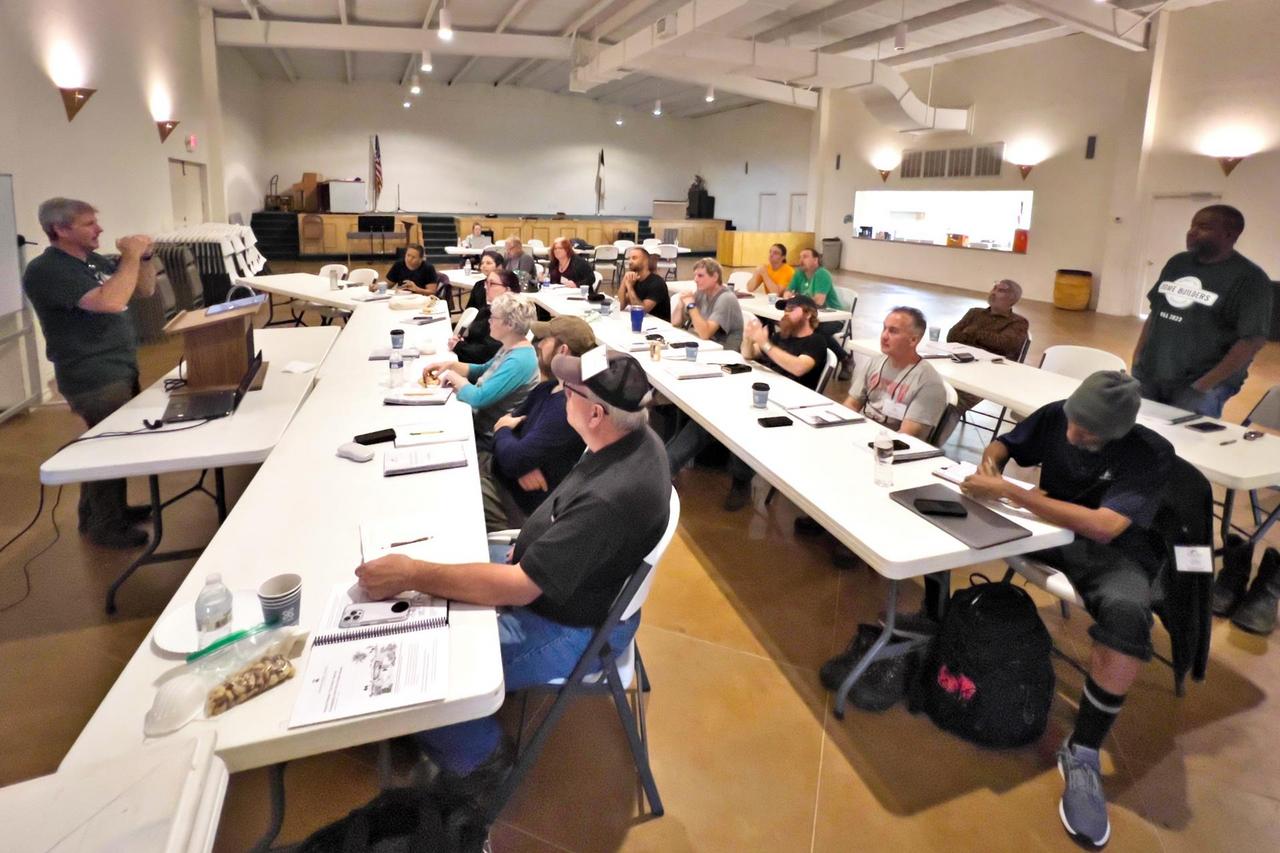
The Fall 2023 attendees during a class given by prolific Monolithic Dome Engineer, Chris Zweifel. Workshop classes are divided between in-class learning and hands-on construction.
Richardson has lined out a practical plan, beginning with finding the right site in the city and building relationships with local banks. Once they see that dome homes can be profitable, they will open up to bigger projects. He also plans to build a dome of his own.
“It’s my ultimate dream,” Richardson said. “The only house I’ll build is a Monolithic Dome.”
Although Richardson doesn’t believe in conformity, he’d like to start with affordable housing and move into affordable custom builds, coming up with a design and floor plan that’s basic, easy to comprehend, and appealing.
“People in my area love porches. So, we will need a recessed porch,” he said.
Richardson and his grandfather have started building a house for his mother, a dome with a gothic arch on the front, using steel trusses, wire in a shrink-wrap coating, and shotcrete. They own a foam gun, and they’re creating a dome shop for storage. He came to the workshop to elevate his skills and gain the confidence to work with Airforms.
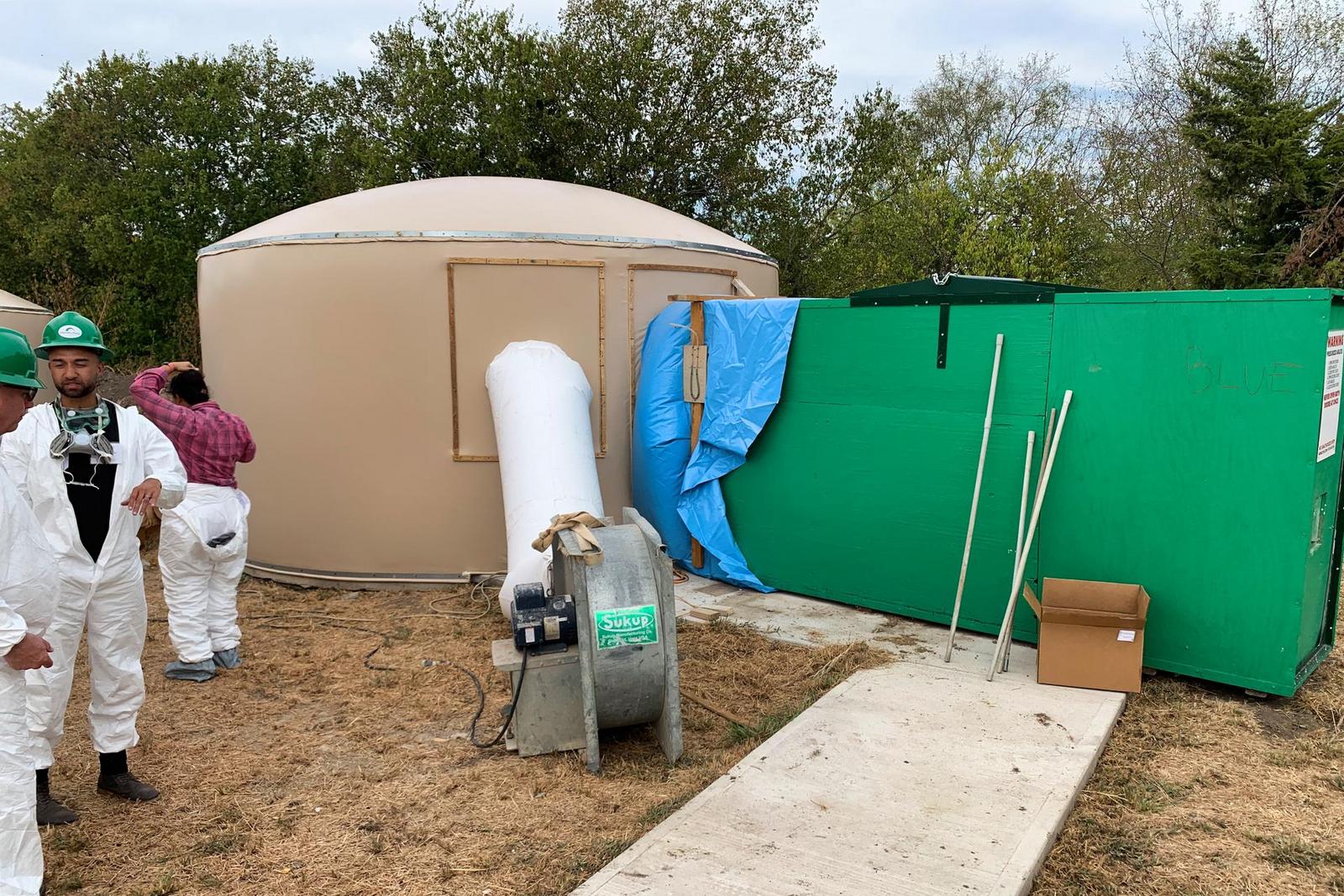
The inflator is attached to the Airform and will run continuously until the dome is complete. The green airlock was designed to make it impossible for one person to hold both doors open simultaneously. Wood frames mark out a future window and door opening.
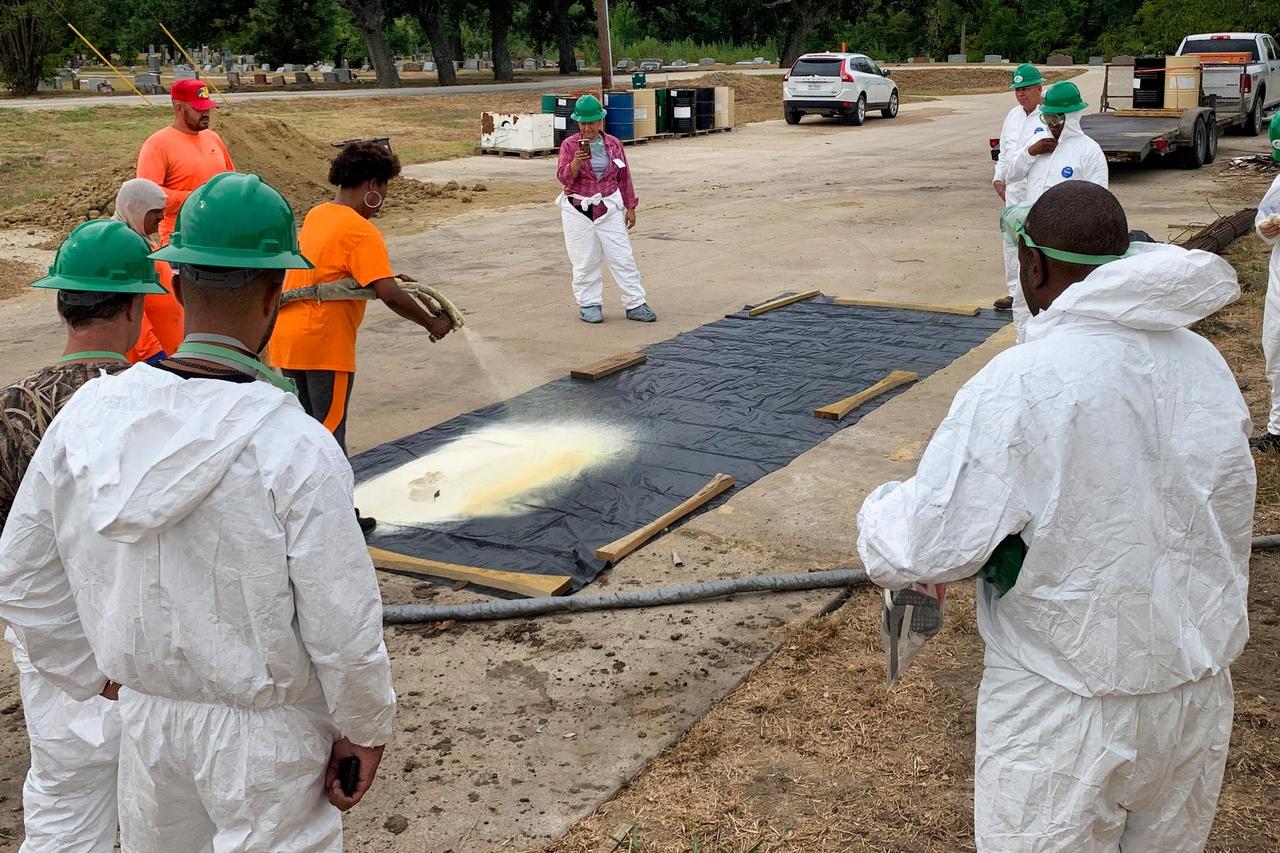
Workshop attendees practice with the foam gun before taking turns spraying foam inside the demonstration domes.
“I don’t want to take on a job before I know what I’m doing,” Richardson said. “The class is great, very hands-on, and I learned the proper, technical way to apply shotcrete and foam. If I’m doing a job for somebody, I want to do it for the absolute best and do it right.”
Richardson attended with support from the Builders and Backers Accelerator Program. They had more than 1000 applicants and chose 100. He’s applying to speak onstage about his project idea to the Builders and Backers Heartland Division in Arkansas.
“This is the first thing I’ve found in a long time that I have real passion for,” Richardson said. “It doesn’t feel like work when doing this venture and getting it off the ground. Monolithic Dome building is at the forefront of what needs to happen now and still feels new. Plus, everyone at Monolithic seems so willing and giving with information. In this industry, a lot of people stay tight-lipped and don’t share. I felt at home, and I felt like I have a support system. I gained so much clarity. It’s really exciting.”
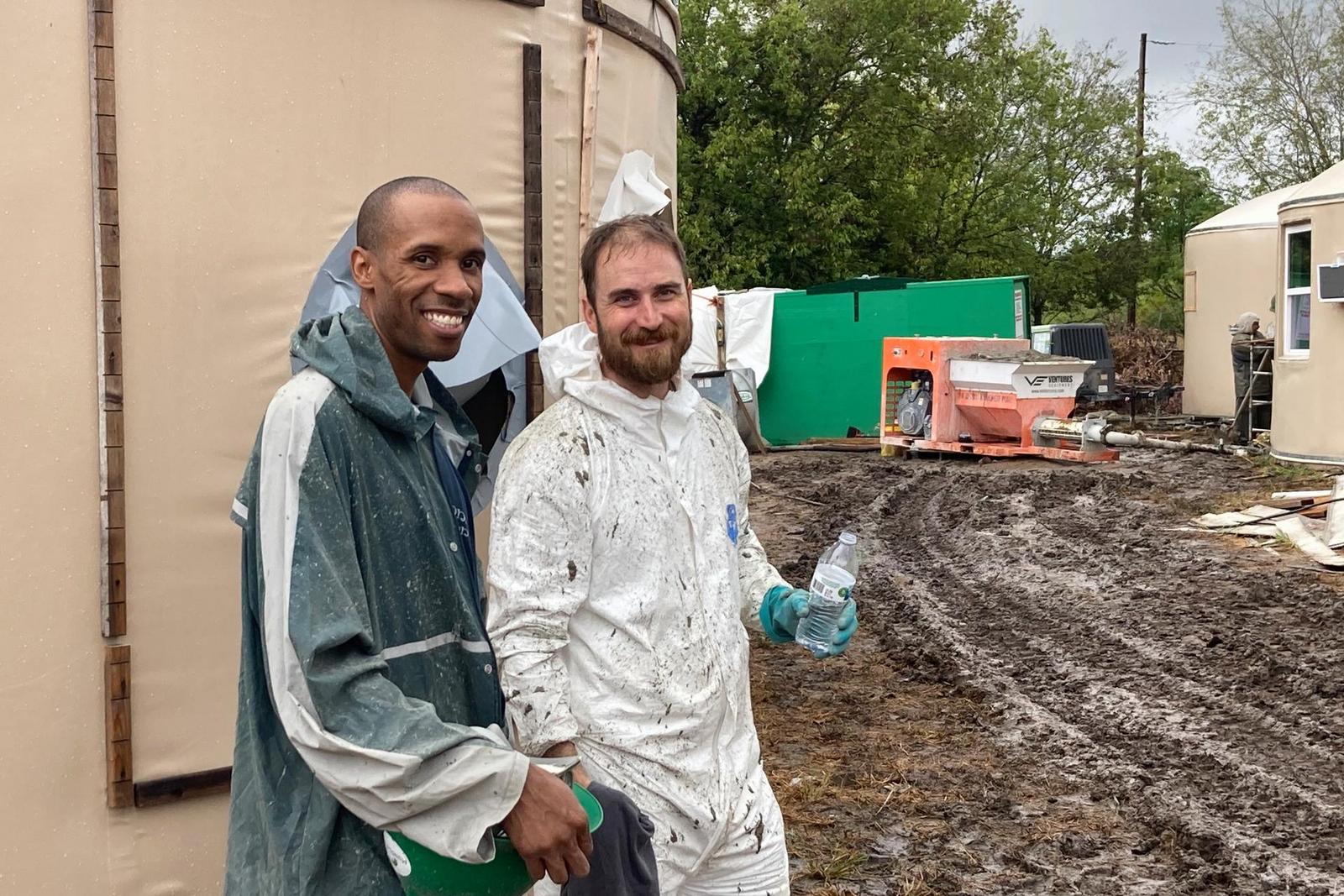
Joshua Mackey and a fellow workshop attendee take a break after taking a turn at the nozzle of the shotcrete pump.
Joshua Mackey
Like Richardson, Joshua Mackey of Cypress, Texas, would like to bring Monolithic Domes to his community to create affordable housing for people who need strong, sturdy homes.
“The workshop changed my life,” Mackey said. “I’ve always been very mechanically inclined as a military helicopter chief mechanic. I’d build engines with my father, and I’m fascinated by beautiful things. I’ve been a software developer for more than 20 years, farming on the side, and that workshop changed my life. I want to help with affordable housing, rebuild communities, and really get into construction.”
Homeowner association restrictions have plagued some hopes for dome building, but now Joshua Mackey and his wife own land in Conroe, Texas, that they can use as they please. He plans to become a real estate developer to help end the housing shortage and create housing that won’t have to be rebuilt after every tornado.
“Sometimes, people act like ants with anthills,” Mackey said. “Those anthills fall, and they get rebuilt in the same place, in the same way. We have to be smarter than ants in Tornado Alley and build strong homes that we won’t have to rebuild. I hate stick houses; they can blow away or burn up too easily. Why stay in something that can cost your life, a home that’s dangerous? I have seen too many stick houses blow away.”
He and his wife, LaShay, have two daughters, Sophia and Natalie, and they seek housing not only for their family but for the community as well. He has drawn up blueprints and 3D models, and he plans to return to the workshop in the spring.
“We have to do a lot of work before building, soil studies, and be sure not to re-route any water flow from the creek,” he said. “I want to learn more about plumbing and foundations and be outside working with the guys a little more, talking about the engineering.”
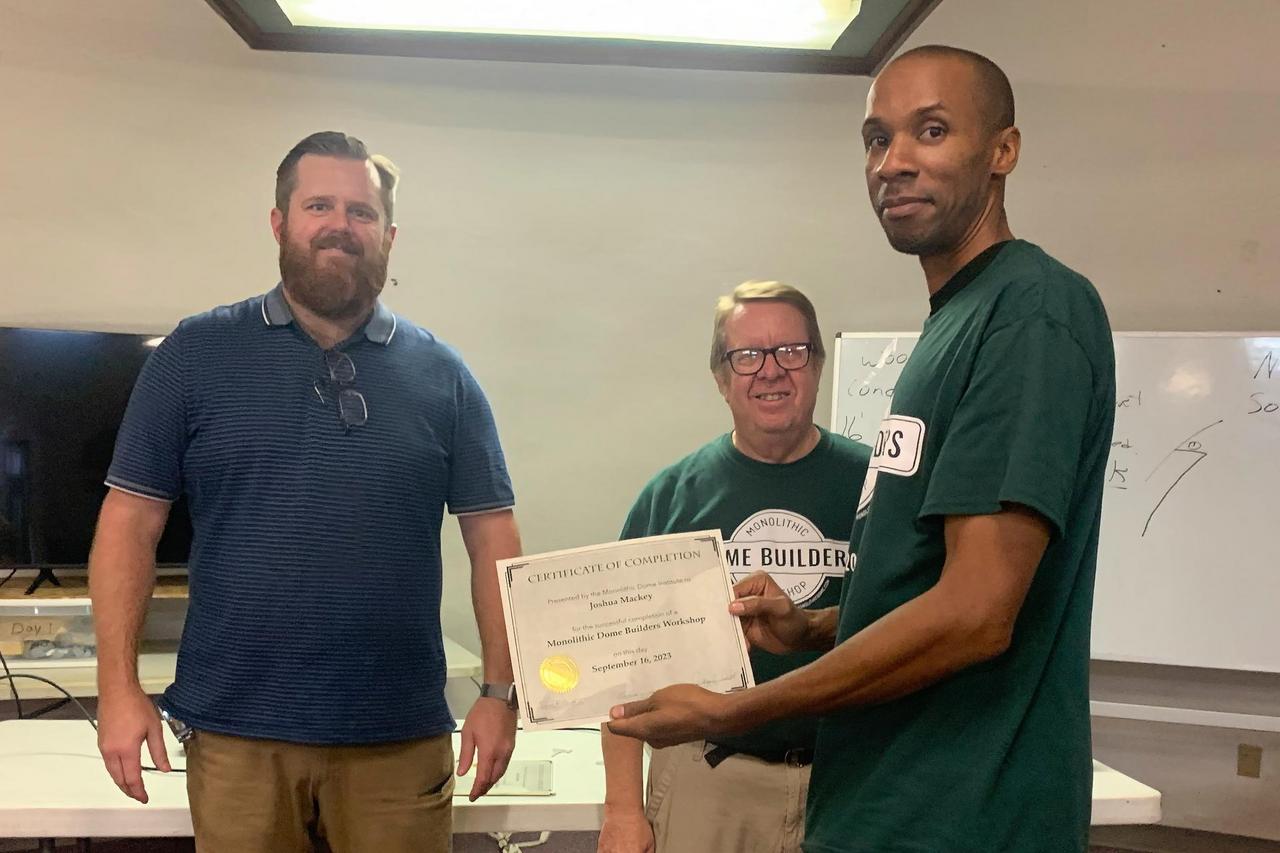
Joshua Mackey receives his certificate of completion from Mike South and Gary Clark on behalf of the Monolithic Dome Institute.
Mackey attended the workshop after ten years of dreaming about it, and he experienced an epiphany of sorts when he saw the dome park in Italy, Texas. It awakened a new hope for sustainable housing that could stand strong against the wind.
“Some people can’t afford to rent big apartments, and this goal is really achievable,” he said. “If we build dome parks, instead of trailer parks that have to be rebuilt in ten years in really messy, wasteful ways for the environment. Units age, need maintenance, and now we can create affordable neighborhoods where people can live for generations.”
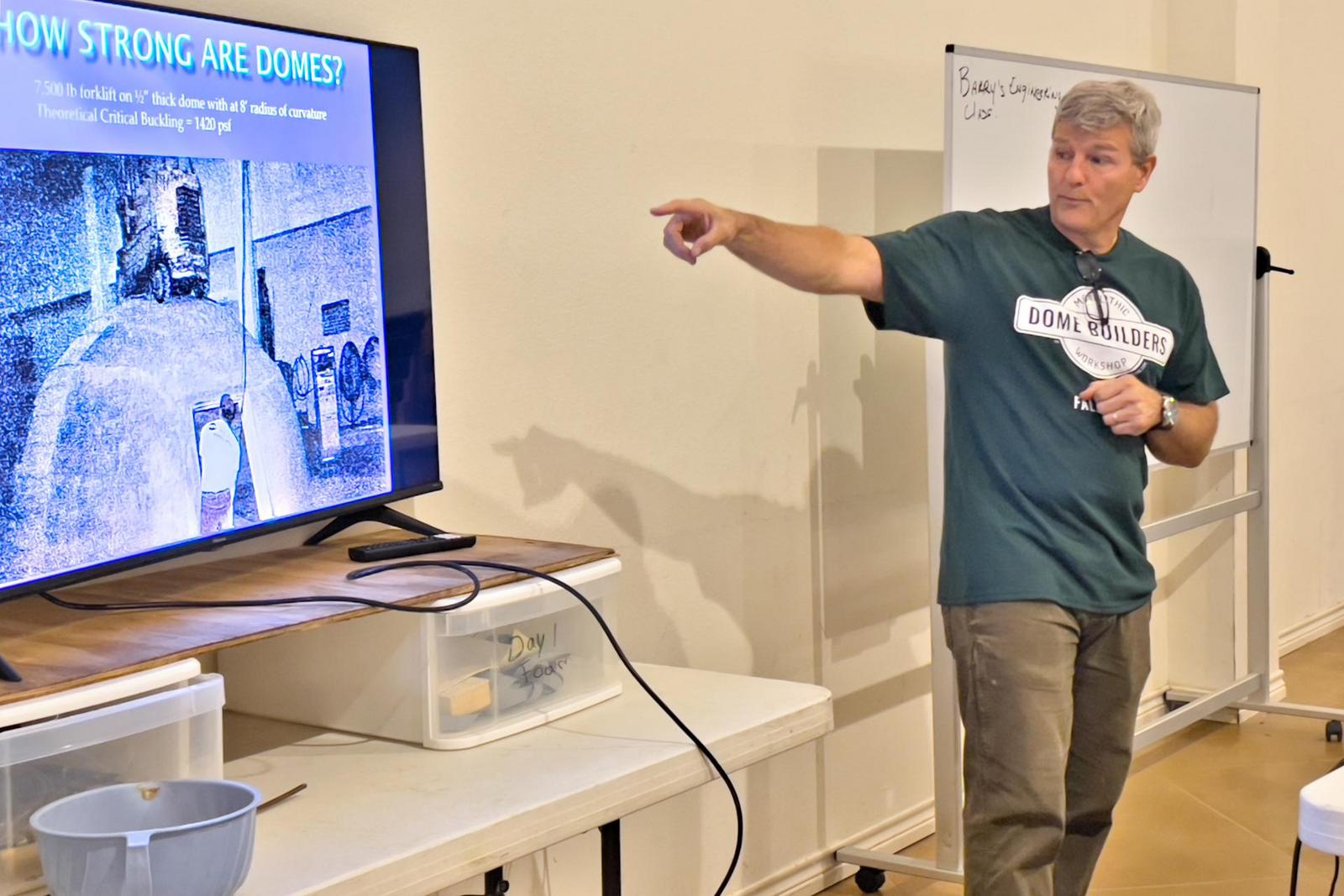
The attendees of the Fall 2023 session of the workshop were lucky to hear from Chris Zweifel of ZZ Consulting. Zweifel and his company have provided engineering for hundreds of Monolithic Domes worldwide.
(Dave South)[/dave-south] / Monolithic Commons / CC BY-SA 4.0
Marty D. Fish
Marty D. Fish, who hails from Poolville, Texas, appreciates Monolithic Domes for their ability to withstand tornados, hurricanes, floods, and fires.
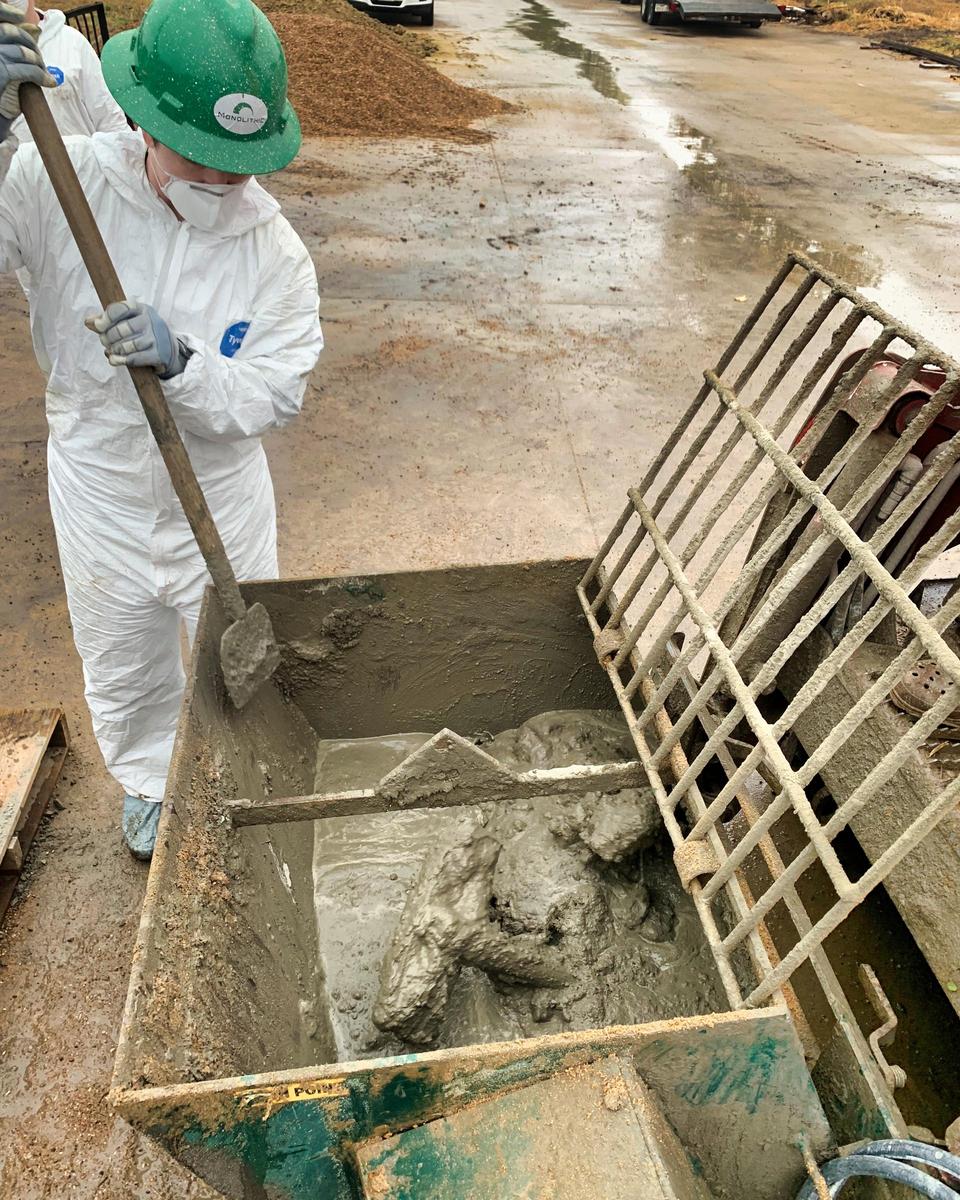
An attendee takes her turn scraping the sides of the Monolithic Portable Concrete Mixer on shotcrete day.
“This is the future,” he said. “A Monolithic Dome home is probably the only home that can withstand climate change. All kinds of disasters have been projected in the next fifty years, and wildfires already are destroying the stick houses. People are tired of losing everything. Monolithic has a solution that could change the world.”
Since many people who need affordable housing can’t afford a urethane machine or a cement sprayer and mixer machine, Fish considered franchising as a way to make Monolithic Dome homes available to more people. He works as a franchise recruiter for math and reading centers and immediately noted the possibility of offering training and leasing equipment, with accountability and certain specific areas assigned to well-trained franchisees, which in turn would teach others. He saw good value in the time spent outside working and in the practical, hands-on learning, and he wanted more.
“I would like to have experienced building a dome from breaking ground, installing electrical, plumbing, and the foundation,” he said. “I’d like to be part of stretching and installing the Airform. I would like to have known more about the finishing touches, like caulking and how to install the windows and door frames. It’s like we got everything in the middle of the process, but I wanted to know more about the beginning and the end.”
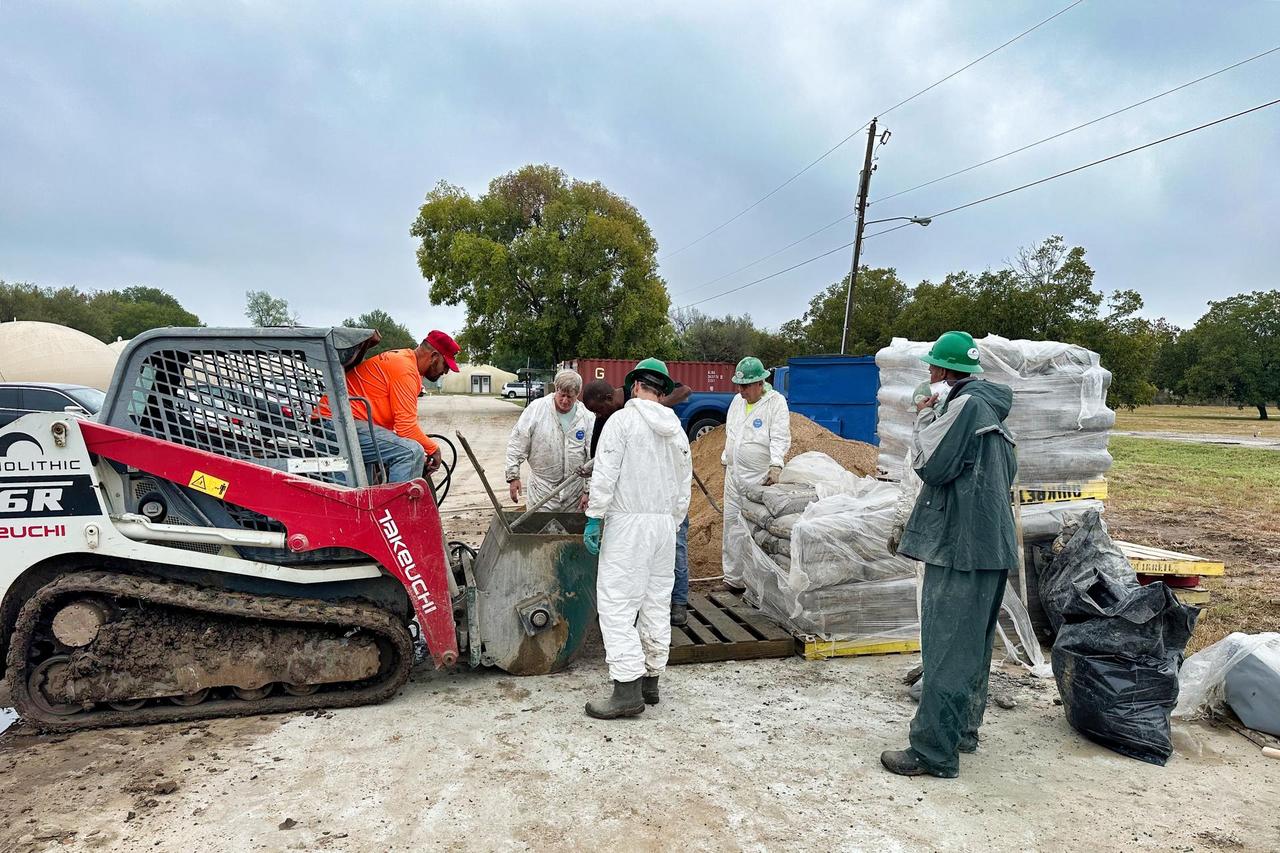
Monolithic crew chief Jesse Tovar instructs workshop students on the operation of the Monolithic Concrete Mixer—the portable mixer mounts on a skid steer for effortless loading of the shotcrete pump.
After the workshop, the practical complexities include getting land, getting a realtor, finding commercial spaces, finding funding support from a bank, and determining how much money to invest. Fish envisioned having Monolithic mentors, maybe even a trouble-shooting support line, to do follow-ups for a year or more with the workshop participants to see how many of them follow through with building domes and what support they may need to realize their goals.
“Everywhere you look, you see climate disasters right and left,” he said. “Monolithic has a solution, and more people need to know about it.”
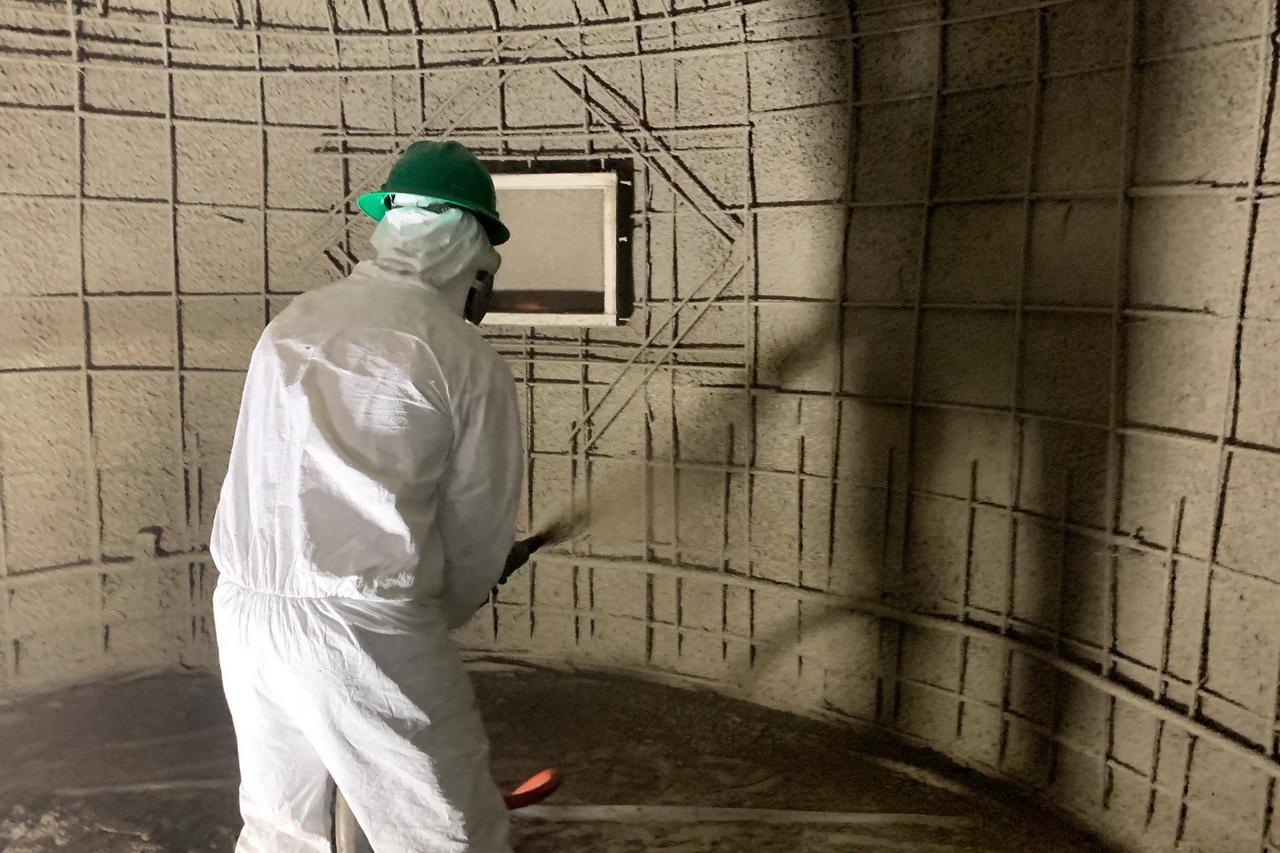
Shotcrete application takes practice and muscles. Logging time at the nozzle of the shotcrete pump will give anyone a bit of both.
